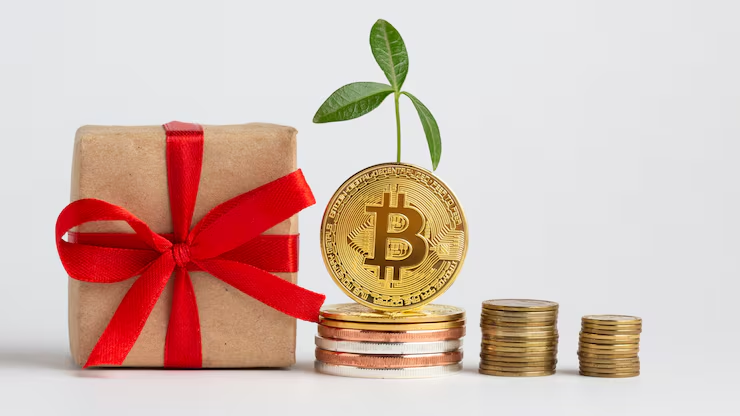The crypto revolution has reshaped the global financial landscape, creating new ways for individuals to earn, invest, and save. One of the most exciting and rapidly expanding areas within this ecosystem is crypto rewards. These innovative incentives allow users to earn cryptocurrency simply by performing everyday activities—shopping, staking, trading, or even using credit cards.
In this comprehensive guide, we’ll explore what crypto rewards are, how they work, the best ways to earn them, and why they represent the next evolution of digital finance.
What Are Crypto Rewards?
Crypto rewards are incentives paid in cryptocurrency for specific user actions. Much like traditional reward systems—cashback, points, or loyalty programs—crypto rewards programs distribute digital tokens instead of fiat currency.
These tokens often have real-world value, can be traded on exchanges, or used within specific ecosystems to purchase goods, pay fees, or stake for additional earnings.
Crypto rewards empower users to participate actively in blockchain ecosystems while enjoying tangible financial benefits.
How Do Crypto Rewards Work?
The concept is simple: users engage with a platform, and in return, they receive cryptocurrency incentives. The rewards structure varies depending on the service.
For example:
- A crypto credit card might give 2–5% back in Bitcoin or Ethereum for every purchase.
- A staking platform might distribute rewards based on how much crypto you hold and lock up.
- A crypto exchange might offer referral or trading bonuses.
Each method leverages blockchain technology to ensure transparent, secure, and decentralized reward distribution.
Types of Crypto Rewards
There are multiple ways to earn crypto rewards. Let’s explore the most popular categories.
1. Crypto Cashback Programs
Similar to traditional cashback, crypto cashback platforms reward users with digital coins for making purchases through affiliate links or crypto debit/credit cards.
Examples include:
- Crypto.com Visa Card: Earn up to 5% in CRO tokens.
- Fold App: Earn Bitcoin rewards for everyday purchases.
- StormX: Shop online and earn crypto cashback in multiple currencies.
These programs merge e-commerce and blockchain, offering real digital value for regular spending.
2. Staking Rewards
Staking involves locking up cryptocurrencies to help secure blockchain networks that use Proof-of-Stake (PoS) mechanisms. In return, participants earn staking rewards—essentially interest payments in crypto.
Popular staking coins include Ethereum (ETH), Cardano (ADA), and Solana (SOL).
How it works:
- You stake your coins in a wallet or exchange.
- The network uses your stake to validate transactions.
- You receive periodic rewards based on your contribution.
The more you stake, the higher your potential returns.
3. Airdrops
Airdrops are free distributions of tokens by blockchain projects, usually to promote awareness or reward loyal users.
There are two main types:
- Promotional Airdrops: Distributed to users who complete specific tasks (e.g., following social media or joining Telegram).
- Holder Airdrops: Given to existing holders of a specific token when a new one is launched.
These events can yield substantial rewards if the project gains market traction.
4. Yield Farming and Liquidity Mining
In the DeFi (Decentralized Finance) sector, users can deposit their crypto into liquidity pools and earn yield farming rewards. These come in the form of transaction fees, governance tokens, or interest.
Yield farming often provides some of the highest returns in crypto, but it carries risks such as impermanent loss and volatility.
Liquidity mining also incentivizes users to supply liquidity to decentralized exchanges like Uniswap or PancakeSwap, earning a portion of trading fees.
5. Referral and Affiliate Programs
Many crypto platforms offer referral bonuses to users who bring in new customers. You share your unique link, and when someone signs up or trades, you receive crypto rewards.
Top examples:
- Binance Referral Program
- Coinbase Earn
- KuCoin Affiliate Rewards
This system encourages community growth while offering passive income opportunities.
6. Play-to-Earn (P2E) Rewards
The Play-to-Earn model has revolutionized gaming by allowing players to earn cryptocurrency or NFTs through gameplay.
Games like Axie Infinity, The Sandbox, and Decentraland allow users to generate income by completing challenges, trading in-game assets, or participating in tournaments.
These crypto rewards merge entertainment, blockchain, and financial incentives.
7. Learning and Education Rewards
Some platforms reward users for learning about blockchain technology. Programs like Coinbase Earn and Binance Learn & Earn give crypto tokens in exchange for completing quizzes and watching educational videos.
It’s a win-win: users expand their knowledge while earning real digital assets.
The Benefits of Earning Crypto Rewards
1. Passive Income Generation
Crypto rewards provide a steady stream of passive income, whether through staking, cashback, or referrals. This income can grow as crypto assets appreciate in value.
2. Portfolio Diversification
By earning different cryptocurrencies as rewards, users can diversify their holdings and reduce overall risk exposure.
3. Accessibility for Beginners
Unlike trading or mining, crypto rewards require minimal technical knowledge. Anyone can participate with just a smartphone or internet connection.
4. Inflation Protection
Cryptocurrencies often act as a hedge against inflation, particularly when earning rewards in limited-supply coins like Bitcoin.
5. Encouraging Blockchain Adoption
Crypto reward systems help drive mainstream adoption by offering tangible benefits for participating in blockchain ecosystems.
Risks and Challenges of Crypto Rewards
While lucrative, crypto rewards come with inherent risks.
1. Market Volatility
Crypto prices fluctuate dramatically. A reward earned today may lose or gain value tomorrow.
2. Scams and Fraud
Some airdrops or reward platforms may be fraudulent. Always verify legitimacy before participating.
3. Regulatory Uncertainty
Tax laws and regulations around crypto rewards vary globally. Users should stay compliant with their local jurisdictions.
4. Smart Contract Vulnerabilities
DeFi platforms that automate rewards can be susceptible to hacks and coding errors.
5. Limited Liquidity
Certain tokens may have low trading volumes, making it difficult to convert them into fiat or other cryptocurrencies.
How to Maximize Your Crypto Rewards
To make the most of crypto rewards, follow these expert strategies:
- Choose Reliable Platforms: Stick to trusted services with verified track records.
- Stay Updated: Follow crypto news to identify new reward opportunities.
- Compound Earnings: Reinvest rewards to increase long-term returns.
- Diversify Reward Sources: Don’t rely on one type—combine cashback, staking, and yield farming.
- Understand the Risks: Research tokenomics, volatility, and potential scams before committing.
The Future of Crypto Rewards
The future of crypto rewards lies in integration and innovation. As blockchain adoption grows, we can expect:
- AI-powered personalized reward systems.
- Cross-chain reward interoperability, allowing tokens to move across multiple blockchains.
- NFT-based loyalty programs, offering collectible digital assets as rewards.
- Corporate partnerships, where major brands distribute crypto tokens for customer engagement.
This evolution will transform how people interact with brands, financial systems, and the internet itself.
Real-World Applications of Crypto Rewards
Crypto rewards aren’t limited to trading—they’re revolutionizing industries:
1. E-commerce
Shoppers earn Bitcoin or stablecoins as cashback on purchases.
2. Banking
Crypto-friendly banks now offer interest-bearing accounts and card-based rewards.
3. Fitness
Apps like Sweatcoin reward users in crypto for physical activity.
4. Social Media
Platforms like X (formerly Twitter) and Steemit allow users to earn crypto through engagement.
5. Travel
Travel platforms offer crypto cashback or discounts for booking with digital currencies.
Conclusion
Crypto rewards have redefined digital incentives, offering a bridge between traditional loyalty systems and decentralized finance. They empower users to earn passive income, engage with blockchain ecosystems, and diversify their portfolios—all while performing everyday activities.
As adoption grows, crypto rewards will become a standard feature in global commerce, integrating seamlessly into our digital lives.
Whether you’re an investor, shopper, or casual user, there’s never been a better time to explore the world of crypto rewards and harness their potential for long-term financial growth.
FAQs About Crypto Rewards
1. Are crypto rewards taxable?
Yes, in many countries, crypto rewards are treated as income or capital gains. Always consult a tax professional.
2. Can I convert crypto rewards into cash?
Absolutely. Most tokens can be traded for fiat currency or stablecoins on exchanges.
3. Do crypto rewards expire?
Unlike traditional points, crypto rewards usually don’t expire and can appreciate in value.
4. Are there risks involved?
Yes, mainly volatility, scams, and regulatory issues. Always use reputable platforms.
5. What is the best way to start earning crypto rewards?
Start with low-risk options like cashback cards or learning platforms, then explore staking or yield farming once experienced.


